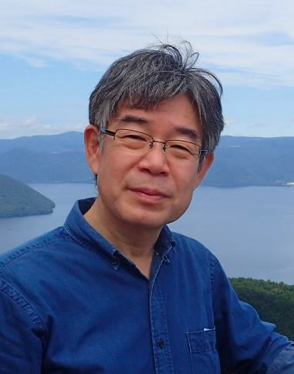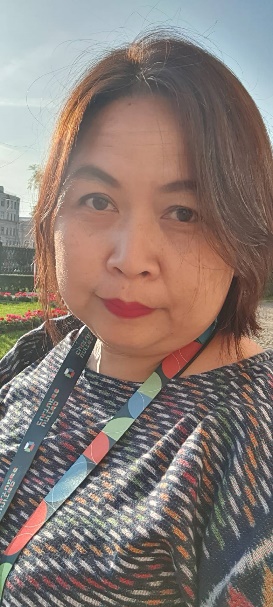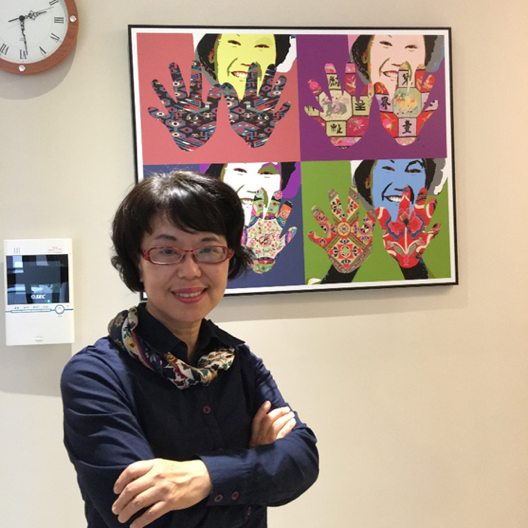Current Position
Educational Background
Professional experience
iography
Presentation Title
Abstract
Current Position
Educational Background
Professional Experiences
Biography
Presentation Title
Abstract
Adaptive Reuse as a Conservation Method
Adaptive reuse is one of the conservation methods involving the renovation and repurposing of historically significant buildings that have been abandoned or are no longer able to serve their original functions. The extent of physical changes to the building during renovation can vary depending on the objectives and the chosen level of modification. The most important aspect of this method is ensuring that any renovation maintains the building's value as much as possible or enhances its significance.
The National Gallery and the National Museum Bangkok cases
The National Gallery and the National Museum Bangkok are originally located in an area once known as the Front Palace, established during the early Rattanakosin period (1782). Later, during the reign of King Chulalongkorn, the Front Palace position was abolished and replaced by the role of the Crown Prince. This led to a reorganization of the Boworn Sathan Mongkol (Wang Na) area for various other uses.
The National Gallery is Western-style architecture inspired by a machine factory in Birmingham, England. In contrast, the buildings within the National Museum Bangkok include traditional Thai architecture and structures influenced by Western and Chinese styles, constructed at different times according to the preferences and interests of their owners.
Steps in the Renovation Process
Renovations of both buildings for exhibition purposes follow these steps:
Current Trends in Building Renovation for Museum Use in Thailand
Currently, trends in the renovation of historic buildings for museum purposes emphasize preserving the building's original value, history, and authenticity, while adapting the functionality to suit contemporary needs and efficiency. Spatial planning must also consider the number of users, safety, and accessibility for the elderly and disabled. The renovations of the National Museum Bangkok and the National Museum of Art focus primarily on adapting the interior spaces, while the exterior appearance is preserved in its original form.
Current Position
Educational Background
Professional Experiences
Previously servokjtyuiojk ed as Vice Chairperson of the 14th Board of the Taiwan Museum Association, ROC. (2018–2021) and Executive Board Member of the TMA (2018–present).
Held roles such as Director of the National Museum of History (2023–2024), Director of the National Museum of Prehistory (2018–2023), and Director of the National Museum of Taiwan History (2016–2018).
Biography
Chang-Hua Wang’s early research focused on Taiwan’s Indigenous social and cultural studies. For over 20 years, her professional field has concentrated on museum operation and management, as well as museums and multiculturalism. During Wang's tenure as director, she led various teams to complete significant projects, including the renovation and reopening of the National Museum of History (2024), the architecture/landscape renovation and permanent exhibition renewal of the National Museum of Prehistory (2023), and the opening of the Museum of Archaeology, Tainan Branch of National Museum of Prehistory (2019).
Presentation Title
Recent Renovations of Museum Architecture in Taiwan and Their Interpretation of Modern Significance: A Case Study of the National Museum of Prehistory and the National Museum of History
Abstract
After years of development, Taiwan's museums have evolved into diverse institutions, functioning as centers for lifelong learning in science, culture, and the arts, as well as partners in preserving cultural heritage. In recent years, museums in Taiwan have faced increasing societal expectations and challenges, such as keeping up with evolving academic knowledge and improving the quality of visitor services. These challenges have prompted both the Ministry of Culture and individual museums to consider architectural and permanent exhibition updates as key strategies for addressing these issues.
This paper explores the renovation cases of the National Museum of History, located in the Nanhai Academy in Taipei, and the National Museum of Prehistory in Taitung City. These two museums differ significantly in terms of their founding backgrounds, locations, intrinsic content, and social contexts. However, when it comes to rethinking their roles and communicating with urban or local communities, both institutions share similar approaches in two key aspects: architectural landscape renovation and permanent exhibition renewal. These common strategies reflect contemporary issues of public engagement and modern significance that all museums must address.

佐佐木史郎Shiro SASAKI(日本。國立愛努民族博物館館長)
Executive Director of National Ainu Museum
Finished graduate school of sociology of the University of Tokyo in 1985
Earned PhD from the University of Tokyo in 1989
Research fellow of National Museum of Ethnology in 1985-1991
Associate Professor of Osaka University in 1991-1995
Associate Professor of National Museum of Ethnology in 1995-2003
Professor of National Museum of Ethnology in 2003-2016
Director of Preparatory Office for National Ainu Museum 2016-2020
Shiro SASAKI was born in Tokyo in 1957. He specializes in cultural anthropology on the study of history and culture of the indigenous peoples in northern Eurasia. Since 1984 he has conducted field research in Finland, Inner Mongolia of China, Siberia, and Far East Russia to research hunting-fishing and reindeer breeding culture of the indigenous peoples in these regions. He is also interested in the commercial and trading relations of the peoples of Northeast Asia during the premodern and modern ages.
Basic ideas of the architecture of the National Ainu Museum
UPOPOY (the National Ainu Museum and Park, uaynukor kotan in Ainu language) was opened in July 2020. This is the first national facility in the Japanese history that is dedicated to the revitalization and new creation of the Ainu culture, the indigenous people in the northern areas of the Japanese archipelago, especially in Hokkaido. In this presentation, I would like to show basic policies and design of architecture of the National Ainu Museum, which is one of the main facilities of UPOPOY. The policies and design indicate how the Ainu people, who had never been able to concern the construction of “national” facilities for a long time, participated in the construction plan of the museum and how they collaborated with museum specialists to design the building. This museum should embody the new museum definition determined at the general conference of ICOM (International Council of Museums) in Plague in 2022, especially the phrase, “they operate and communicate ethically, professionally and with the participation of communities, offering varied experiences for education, enjoyment, reflection and knowledge sharing.”

Sirin Yuanyaidee (泰國。國立干乍那披實博物館館長)
Director of the Golden Jubilee National Museum (Kanjanaphisek National Museum)
B.A. Archaeology, Art History, Faculty of Archaeology, Silpakorn University.
2002 – 2011 Curator, National Museum Bangkok
2011 – 2014 Chief Curator, Phrapathom Chedi National Museum
2014 – 2017 Chief Curator, Ban Chiang National Museum, in World Cultural Heritage Site
2017 – 2018 Curator, National Museum Storage
2018 – Present Director, the Golden Jubilee National Museum
My name is Sirin Yuanyaidee, I currently serve as the Director of the Golden Jubilee National Museum. My passion lies in museum management, and I thrive on the challenges that come with overseeing the dynamic and ever-evolving nature of museum work. Recently, I’ve developed a strong interest in the integration of technology within exhibitions, exploring how it can enhance visitor experiences.
Earlier in my career, I worked at the National Museum Bangkok, the oldest national museum in Thailand. The museum’s historical buildings provided me with valuable insights into the preservation and management of significant architectural heritage. I find museums housed in old buildings particularly fascinating, as they blend history and culture, but they also require careful attention to maintain their structural and historical integrity.
The challenge of renovating historic buildings for exhibition purposes Case Study: National Gallery and National Museum Bangkok, Thailand

王長華(臺灣。前國立歷史博物館館長。現任ICAMT委員)
Board Member of the International Council of Museums (ICOM) - International Committee of Architecture and Museum Techniques (2019–2025)
MA in Anthropology, National Taiwan University
PhD in Adult Education, National Kaohsiung Normal University